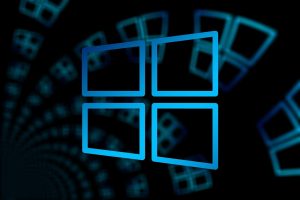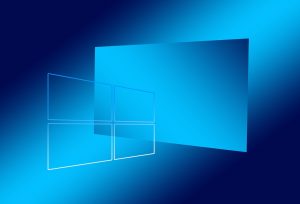The Evolution of Operating Systems Over the Years

Operating systems have come a long way since the early days of computing. The evolution of operating systems reflects the changing capabilities of computer hardware and users’ needs over time. In the beginning, operating systems were very basic and focused on efficient utilization of limited hardware resources. As computers became more powerful, operating systems evolved to provide more features, graphical interfaces, multi-tasking and networking capabilities. Let’s take a look at how operating systems have evolved over the decades.
The 1950s and Early Computer Systems
The first commercial computer systems that emerged in the 1950s, like the UNIVAC I and the IBM 701, did not have operating systems in the way we think of them today. They ran one program at a time and programmers had to write programs in machine code specific to that hardware architecture. There was no abstraction between the software and hardware. The first operating systems were very basic supervisors or monitors to coordinate hardware resources among multiple users and applications. These included GM-NAA I/O for the IBM 704 in 1956 and the Atlas Supervisor for the Manchester Atlas computer in 1962. They helped schedule jobs, manage memory and I/O devices.
Batch Processing Operating Systems
In the 1960s, the batch processing model was widely used in mainframe computers. Users submitted jobs in batches on punch cards which were processed in first-come first-serve order. Operating systems like IBM’s OS/360 (1964) and CDC’s KRONOS (1962) managed these batch jobs. They loaded programs and data, kept track of resources used for billing and prioritized work. The programs ran to completion before the next job could start. There was no interaction between the user and the computer while the job was running. Basic file management capabilities were introduced during this period.
Time-sharing and Multiprogramming
In the 1960s and 70s, time-sharing operating systems like Multics, TENEX and UNIX enabled multiple users to interact simultaneously with the computer through terminals. Instead of running one job to completion, the CPU rapidly switched between multiple running programs giving the illusion that each user had their own computer. This interactivity allowed new applications like text editors, email and programming environments. For example, the vi text editor was originally written for an early version of UNIX in 1976. Multiprogramming operating systems like IBM’s OS/360 also allowed CPU time to be shared efficiently between running programs.
Personal Computer Operating Systems
The emergence of microcomputers in the 1970s popularized computers for individual and business use. Early home computers like the Apple II (1977) and Commodore PET (1977) used simple operating systems like Apple DOS and Commodore BASIC which booted directly into a programming environment. The rise of pre-packaged application software drove the need for more advanced operating systems. VisiCalc, the 1979 spreadsheet software for the Apple II, was one of the first killer apps that drove personal computer sales.
In 1981, IBM entered the personal computer market with its IBM PC running PC-DOS developed by Microsoft. Microsoft later licensed an adapted version of the OS called MS-DOS to other PC makers, making it the dominant operating system. Apple also launched the Macintosh in 1984 with the graphical user interface (GUI) based Mac OS. Microsoft Windows arrived in 1985 and evolved from a GUI shell that ran on top MS-DOS to Windows 95 which boasted a full 32-bit architecture and multitasking capabilities. Windows and Mac OS drove widespread adoption of the GUI and mouse input, replacing command-line interfaces.
The late 1980s and 90s saw new versions of UNIX like HP-UX, Solaris, AIX and Linux emerge as alternatives to proprietary operating systems from Microsoft and Apple. The open source Linux kernel was developed in 1991 and combined with GNU system components like glibc and Bash to create full Linux distributions that ran on PC hardware, like Red Hat and Debian. Linux proved extremely popular for web servers, embedded systems and enterprise use.
The Rise of Networking and the Internet
The emergence of computer networking and the Internet was enabled by networked operating systems. Novell’s NetWare was one of the first client-server operating systems for PC networks. Windows NT (1993) also provided networking capabilities that helped drive Windows adoption in the enterprise. The growth of the Internet led to increased demand for servers to host websites and applications. BSD and Linux became the dominant open source operating systems powering Internet infrastructure, servers, routers and firewalls.
Operating systems also evolved to connect desktop and mobile devices to the Internet and enterprise networks. Windows 95 dramatically increased home PC usage of the Internet through its built-in TCP/IP stack and dial-up networking support. Windows 2000 introduced Active Directory for connecting enterprise users and systems. Mac OS X (2001) was based on a UNIX foundation, improving Mac’s networking capabilities.
Mobile Operating Systems
Operating systems designed specifically for mobile devices first emerged in the 1990s and 2000s. Palm OS (1996) powered early Personal Digital Assistants (PDAs). The BlackBerry OS (1999) was designed for email on early smartphones with keyboards. Apple revolutionized the mobile space with the iPhone and iOS (2007), driving the mass adoption of touchscreen smartphones. Android (2008) secured dominance as an open source mobile operating system for many device makers. Lightweight Linux distributions like Maemo and MeeGo also appeared on early mobile Internet devices and tablets.
The rapid evolution of mobile hardware capabilities and user expectations around mobile apps spurred intense development of mobile operating systems. Features like power efficiency, touch interfaces, app stores, multimedia support, connectivity and security became critical for mobile operating systems. The emergence of tablets like the iPad also drove new hybrid user experiences between mobile and desktop operating systems.
Modern Operating Systems
Today Windows, MacOS, Android and iOS power the vast majority of desktop and mobile devices. Linux continues to dominate servers, cloud infrastructure and embedded systems. Operating systems have evolved advanced capabilities around:
– Memory management – features like paging, virtual memory and caching to efficiently handle RAM.
– Multi-tasking and scheduling – preemptive multitasking, threading, multiprocessing.
– Disk storage – improved file systems like NTFS, exFAT, ZFS, Btrfs.
– Device drivers – abstraction layers to support hardware like graphics cards, printers, storage devices.
– Networking and connectivity – wireless networking, mobile broadband, Bluetooth, cloud services.
– Enhanced security models – user accounts, permissions, encryption, sandboxing, isolation.
– Graphical interfaces – window managers, Desktop Environments, assistive technologies.
– Standardized APIs – POSIX, Win32, Java, web APIs. Allow applications to integrate with the OS.
– Developer tools and languages – frameworks, IDEs, scripting languages. Expand capabilities for third-party apps.
– Advanced multimedia – 3D graphics, video acceleration, sound, voice recognition.
– Power efficiency – runtimes optimized for mobile chips and longer battery life.
Rapidly changing hardware advancements like multicore CPUs, 64-bit computing, touch interfaces, and retina displays have also influenced operating system evolution to take advantage of these capabilities.
The Future of Operating Systems
The operating system landscape will continue evolving rapidly alongside hardware and application changes. Some key trends shaping the future of OS capabilities include:
– The rise of ARM and mobile chips driving development of operating systems optimized for these devices. Apple’s shift to Apple Silicon for Macs leverages mobile operating system capabilities.
– Containerization, virtualization and sandboxing transforming operating system architectures. Isolating processes securely while sharing underlying resources efficiently.
– Web Assembly and cross-platform frameworks allowing web apps to run natively with closer OS integration. Blurring web/native app distinctions.
– Expanded voice interfaces and digital assistants like Siri, Alexa and Cortana becoming integrated into the OS experience.
– Increased adoption of desktop-as-a-service and cloud infrastructure, shifting OS needs to efficiently manage remote apps and resources.
– Linux continuing dominance in servers, embedded devices and Internet of Things (IoT) with customized distros.
– Gaming needs pushing OS capabilities around graphics, memory management and performance tuning.
– Improved biometrics security and facial/voice recognition capabilities for user authentication.
– Continued development of open source, lightweight and secure operating systems for innovative device form factors.
– New experiments around distributed, decentralized and blockchain-based operating systems and applications.
Operating systems face the challenge of evolving to leverage cutting edge hardware capabilities while maintaining compatibility and a consistent experience across current applications and user workflows. The interplay between operating system innovation and application development will continue to shape how we interact with computers.








